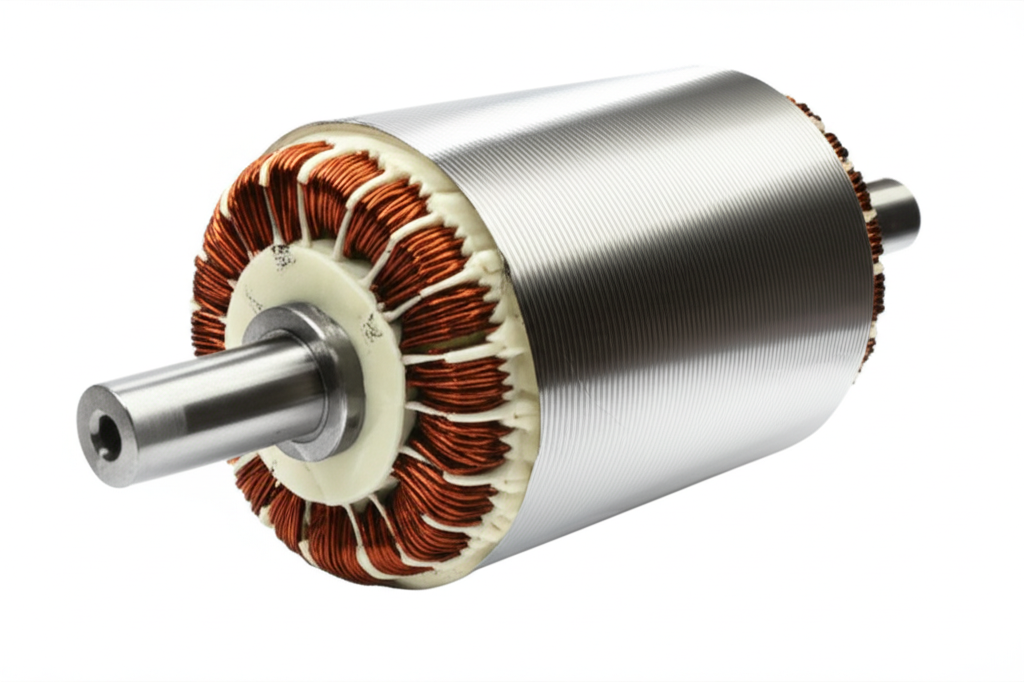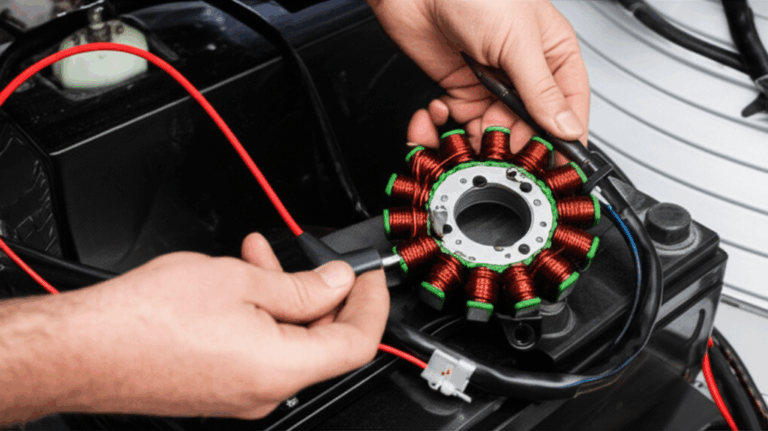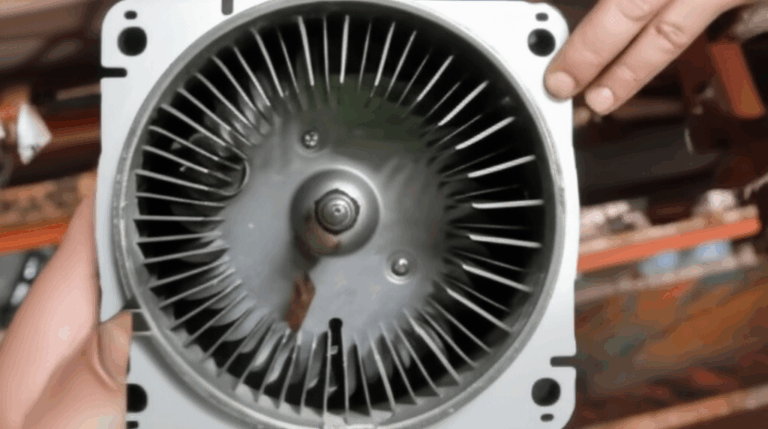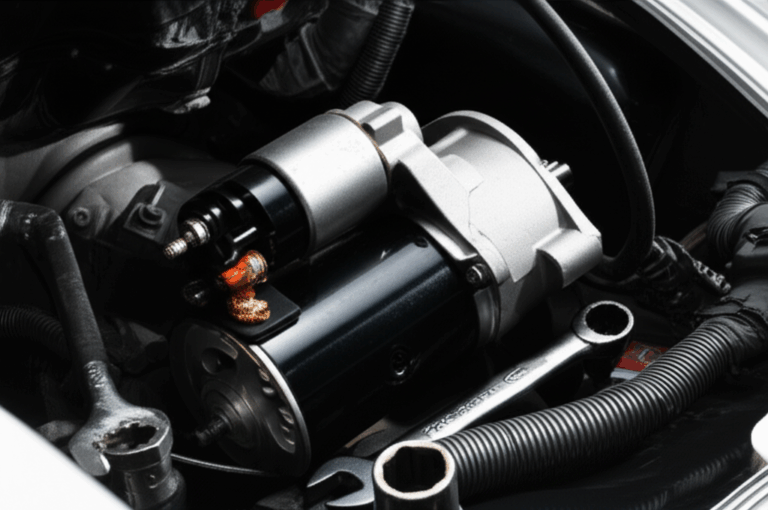
Is a Stator Used in AC Motors? Understanding Its Essential Role
Table of contents
- Introduction: The short answer and why it matters
- What is a stator? A quick definition you can trust
- The stator’s pivotal role in AC motor operation
- How the stator creates a rotating magnetic field
- Three-phase motors
- Single-phase motors
- Stator vs. rotor: Better together
- Stators across AC motor types
- Induction motors (asynchronous)
- Synchronous motors
- Permanent magnet AC motors
- Reluctance and hysteresis motors
- A quick word on universal motors
- The importance of stator design and materials
- Laminations, losses, and magnetic flux
- Windings, insulation, and connections
- Cooling, thermal protection, and reliability
- Air gap, poles, torque, and speed
- Standards and efficiency classes
- Troubleshooting and maintenance: Stator problems in the real world
- Why this matters: Energy, reliability, and cost
- Frequently asked questions (FAQs)
- Conclusion: The unsung hero of AC motors
Introduction: The short answer and why it matters
I will not bury the lead. Yes, a stator is used in AC motors. In fact, it is the stationary heart of the machine. When I first learned how an electric motor turns electricity into motion, the stator clicked everything into place. If you understand the stator, you understand how AC motors produce torque, why they run at certain speeds, and what makes them efficient or wasteful. That is true whether you work on industrial drives, HVAC fans, machine tools, or even EV traction motors.
What is a stator? A quick definition you can trust
A stator is the stationary part of an electric motor. The word comes straight from “static.” It does not spin. It surrounds the rotor. Inside the stator you will find a core made of thin steel sheets called laminations and coils of copper or aluminum wire called windings. Those windings connect to the motor’s terminals through the terminal box. End bells or end shields hold the bearings and the shaft in place so the rotor spins freely in the air gap inside the stator.
If you cut a typical AC motor in half, you would see:
- A laminated iron core with slots. That is the stator core.
- Coils tucked into those slots. Those are the stator windings.
- An air gap between stator and rotor.
- The rotor with its own conductive paths or magnets.
- A frame that supports everything and helps remove heat.
The stator’s pivotal role in AC motor operation
So what does the stator actually do? It creates a rotating magnetic field. That field is the “invisible hand” that grabs the rotor and twists it. When AC current flows through the stator windings, a magnetic field builds in the core. The field rotates at a speed set by the line frequency and the number of poles in the winding. That rotating field induces current in the rotor of an induction motor or couples with a magnetized rotor in a synchronous motor. The result is torque. Electrical energy goes in. Mechanical energy comes out. Simple idea. Powerful results.
If you come from a DC motor background, this looks a little different. In many DC motors the field can be stationary and the armature (the rotating part with windings and a commutator) spins inside it. In AC motors, we do not use a commutator. We let alternating currents in the stator windings produce a rotating magnetic field instead. The principle is still electromagnetic induction. Faraday’s law and Lenz’s law do the heavy lifting.
How the stator creates a rotating magnetic field
Three-phase motors
Three-phase power is the gold standard for industrial motors for a reason. Feed three sinusoidal currents into three sets of stator windings that are spaced 120 electrical degrees apart. Those currents produce three magnetic fields that ebb and flow. Due to their phase shift and physical placement, the combined field rotates smoothly around the stator. No moving contacts. No timing brushes. The math looks fancy. The idea is elegant. Three balanced phases give you a constant magnitude rotating magnetic field with minimal torque ripple.
That field rotates at synchronous speed:
- Synchronous RPM = 120 × Frequency / Number of Poles
- At 60 Hz with 4 poles you get 1800 RPM.
- At 50 Hz with 4 poles you get 1500 RPM.
Induction motors run a bit slower than synchronous speed because they need slip to induce rotor current. Synchronous motors match the field exactly.
Single-phase motors
Single-phase AC motors do not get a naturally rotating field from a single sinusoid. They get an oscillating field that by itself cannot start the rotor. So we cheat a little. We create a phase shift to fake a second phase. You will see:
- Start windings and run windings
- Capacitor-start or capacitor-run designs
- Shaded-pole designs for very small motors
That phase shift shifts the current in one winding relative to another. Now the stator produces a rotating magnetic field component. The rotor starts. Once it spins, the main winding can keep it going.
Stator vs. rotor: Better together
I like to explain it this way. The stator is the dance floor. The rotor is the dancer. The music is the alternating current. The stator sets the beat. The rotor follows.
- Stator: Stationary core and windings that create the rotating magnetic field.
- Rotor: The rotating part inside the air gap. It sees the stator’s field and reacts. In induction motors the rotor has bars or windings that carry induced current. In synchronous machines the rotor carries permanent magnets or a DC-excited field.
- Interaction: The stator’s rotating magnetic field induces current or couples magnetically with the rotor. The rotor experiences torque for as long as the field exists.
On the rotor side, construction matters too. If you want to dig deeper into rotor materials and their influence on performance, you can explore modern rotor core laminations. Stator and rotor designs work as a pair. Change one and you change the other’s behavior.
Stators across AC motor types
Induction motors (asynchronous)
Most AC motors in factories are squirrel cage induction motors. The stator creates the rotating field. The rotor looks like a “squirrel cage” of conductive bars connected by end rings. The rotating stator field induces currents in those bars. Lenz’s law says the rotor’s magnetic reaction tries to catch the stator’s field. It never quite does. That lag is the slip. Slip is essential because without it there would be no induced current and no torque.
You will also find wound rotor induction motors. The stator still creates the rotating field. The rotor has windings connected to slip rings. External resistors can shape the torque-speed curve during start-up. Heavy-duty cranes and mills love that control.
Synchronous motors
In a synchronous motor, the stator creates the same rotating field. The rotor carries a DC-excited field winding or permanent magnets. Once locked in, the rotor runs at synchronous speed with zero slip. That can deliver precise speed control or improved power factor. You will see synchronous machines in high-power applications and in many permanent magnet AC motors.
Permanent magnet AC motors
Permanent magnet AC (PMAC) motors use a magnetized rotor. The stator is still the workhorse that creates the rotating magnetic field. The magnet rotor locks onto the field. These motors can achieve high efficiency and power density. That is one reason EV traction motors push this architecture. You will hear about distributed windings, concentrated windings, and hairpin windings in their stators. Each choice changes copper losses, slot harmonics, and cooling.
Reluctance and hysteresis motors
Switched reluctance motors and synchronous reluctance motors still rely on the stator’s magnetic field. The rotor geometry changes to align with paths of least magnetic reluctance. Hysteresis motors use rotor materials with specific magnetic properties. The stator’s field remains the prime mover in all of them.
A quick word on universal motors
Universal motors can run on AC or DC. They use series windings and brushes. Since the field and armature currents reverse together on AC, the torque direction stays the same. This design behaves differently than induction or synchronous machines. Yet you still have a stator that supplies a magnetic field that the rotor interacts with.
The importance of stator design and materials
Laminations, losses, and magnetic flux
The stator core is not one solid chunk of iron. It is a stack of thin steel sheets called laminations. Why slice the core into sheets? To reduce eddy currents and hysteresis losses. Alternating magnetic fields induce currents in the iron. Thin electrical steel sheets with insulation between layers restrict those loops. You get lower core losses and higher efficiency.
If you have ever compared motors side by side, you know laminations matter. Better steel and tighter stacking give the stator lower losses. That lowers heat. That extends insulation life. If you want a concise primer on why lamination quality drives performance, this overview of electrical steel laminations lays out the fundamentals. For stator-specific construction details, you can also see how manufacturers specify a stator core lamination stack. The construction choices in those stacks influence magnetic flux, saturation, and noise.
Windings, insulation, and connections
Windings turn current into magnetic flux. Copper wins on conductivity. Aluminum saves weight and cost. Copper windings usually run cooler for the same power because of lower resistance. That can improve efficiency and reliability. I have seen motors with aluminum windings succeed in cost-sensitive applications. For premium efficiency classes, most manufacturers choose copper.
Insulation systems are unsung heroes. The enamel on wire plus slot liners, wedges, and varnish form a dielectric barrier that must survive heat, vibration, and moisture. Insulation classes (for example, Class F, Class H) define temperature capability. Overheating breaks insulation down. Once that happens, you see short circuits, turn-to-turn faults, or ground faults.
Connection methods matter too. Star (wye) and delta connections change line current, voltage, and starting behavior. You will see star-delta starters in older systems. In modern systems, variable frequency drives (VFDs) handle soft starting and speed control so the winding connection stays fixed.
Cooling, thermal protection, and reliability
Motors produce heat in the stator from copper losses and core losses. Cooling strategies include:
- External fans on the shaft
- Internal forced ventilation
- Water jackets or liquid cooling for high power density machines
- Finned frames to increase surface area
Thermal protection uses embedded thermal switches, RTDs, or thermistors to watch winding temperature. When a stator overheats, insulation ages fast. A little heat today can become a failure next month. I learned to respect heat early in my career. One small exhaust fan failed on a dusty pump motor. That motor ran hot for weeks. The stator winding varnish turned dark and brittle. The motor started tripping on overcurrent under modest load. We pulled it. The winding tested low insulation resistance to ground. Rewind time. A cheap fan turned into expensive downtime.
Air gap, poles, torque, and speed
The air gap is the small clearance between stator and rotor. It looks minor. It shapes performance. A small air gap increases magnetic coupling and torque per amp. It also makes the motor more sensitive to rotor eccentricity and vibration. Mechanical tolerances, bearing health, and frame rigidity keep that gap even.
Pole count sets synchronous speed. More poles mean lower speed at the same frequency. Four-pole motors are common. Six-pole and eight-pole motors run slower with more torque at low speed. Torque depends on flux, current, and the geometry of slots and poles. Slot shape, skew, and tooth width can reduce cogging and pulsation torque. I still remember a test rig that buzzed at a specific load. A slight stator slot skew in the redesign smoothed the torque ripple and quieted the machine.
Standards and efficiency classes
Manufacturers build stators to meet standards. Two sets you will see often:
- NEMA MG 1 in North America
- IEC 60034 globally
Efficiency classes like IE1, IE2, IE3, and IE4 set minimum performance. Higher classes require better materials, tighter tolerances, optimized slot fill, and better cooling. Core losses and copper losses both matter. Improved lamination steel, higher slot fill with copper, and cleaner manufacturing all contribute. If you want to see how these cores come together across different motor families, this guide to motor core laminations shows the building blocks across stators and rotors.
Troubleshooting and maintenance: Stator problems in the real world
When an AC motor fails, the stator often sits at the center of the story. Here are the patterns I see most often.
- Overheating in the stator windings: Caused by blocked ventilation, high ambient temperature, overloading, poor power quality, or a failed fan. Heat ages insulation. Insulation breakdown leads to shorts.
- Short circuit in the stator: Turn-to-turn faults or phase-to-phase faults result in excessive current and rapid trip. Sometimes you smell it before you see it.
- Open circuit in the stator: A broken lead or a failed connection in the terminal box leaves a phase dead. The motor hums. It will not start. It draws unbalanced current.
- Ground fault: Insulation to ground fails. A protective relay trips. A megohmmeter test reveals low resistance to the frame.
- Phase imbalance: Unequal line voltages or winding resistance differences drive unequal currents. That means heat in one phase. Bearings pay the price too.
- Vibration and noise: A rubbed stator due to bearing failure. A rotor that runs off-center. Electromagnetic forces that excite stator teeth. Listen closely. It often tells you what is wrong.
Testing helps you pinpoint the fault:
- Insulation resistance testing to ground
- Winding resistance measurements
- Surge testing for turn insulation
- Current signature analysis for electrical and mechanical issues
- Thermal imaging to catch hot spots
- Vibration analysis to catch mechanical issues that can hurt the stator
If you discover severe stator damage, you decide whether to repair or replace. A rewind can restore function if the core is sound. If the core overheated and lost magnetic properties due to saturation or annealing damage, efficiency drops. Then replacement makes more sense. I have seen rewinds that saved critical machines in days. I have also seen rewinds that masked deeper problems like poor cooling or voltage imbalance. Fix the root cause or you will be back at it.
Why this matters: Energy, reliability, and cost
You might wonder why the stator gets so much attention. Two reasons. It drives efficiency. It drives reliability.
- Efficiency: Core losses in the stator come from hysteresis and eddy currents. Better electrical steel and thinner laminations reduce both. Copper losses come from winding resistance. Better slot fill and cooler operation lower those. Together they push motors into IE3 and IE4 territory.
- Reliability: Most motor failures trace back to insulation breakdown, thermal stress, contamination, or vibration. The stator’s windings and core suffer first. Keep them cool and clean. Feed them balanced voltage at the right frequency. They will run for years.
When I audit plants, I always look at how the team handles power quality, cooling, and maintenance scheduling. A few small changes cut stator temperature by a handful of degrees. That pays back with longer insulation life and fewer trips. If your process hates unplanned downtime, guard the stator like a crown jewel.
Frequently asked questions (FAQs)
Q: Can an AC motor work without a stator?
A: No. The stator is fundamental. It creates the rotating magnetic field. Without that field there is no torque. The rotor would have nothing to react to.
Q: Is a stator only found in AC motors?
A: No. Many DC motors also have a stator. In DC machines the stator provides a magnetic field using permanent magnets or field windings. The difference is how the field interacts with the rotor. AC motors rely on a rotating magnetic field in the stator rather than a commutated rotor.
Q: What happens if a stator fails?
A: It depends on the failure. A shorted winding trips protection immediately. An open circuit prevents start. A ground fault trips on ground fault protection. Overheating reduces insulation life. You can sometimes rewind the stator if the core is healthy. If the core is damaged, replacement is the safer path.
Q: What materials are stators made of?
A: The core is built from thin electrical steel laminations with high magnetic permeability. The windings use copper or aluminum. Insulation materials include enamel, slot liners, wedges, and varnish. Frames come in cast iron, aluminum, or steel. If you are curious about the lamination steels themselves, this resource on electrical steel laminations explains grades and choices.
Q: What is a stator winding?
A: A stator winding is a coil of insulated wire placed in the stator slots. When AC flows through the windings, it produces a magnetic field in the core. The arrangement of coils around the stator creates poles. The number of poles sets synchronous speed. The phase arrangement creates a rotating magnetic field.
Q: How does a VFD affect the stator?
A: A variable frequency drive changes the frequency and voltage feeding the stator. That gives you speed control and soft starting. VFDs can introduce higher dv/dt and switching harmonics. Good cable practices, filters, and inverter-duty insulation protect the windings.
Q: Why do laminations matter so much?
A: Laminations reduce eddy current losses in the core. Thinner sheets with proper insulation between them block circulating currents. Better steel grades also reduce hysteresis losses. Together they cut heat and boost efficiency. For a closer look at how manufacturers build these stacks, check out a typical stator core lamination design.
Q: Do rotors use laminations too?
A: Yes. Rotors in AC motors also use thin steel laminations to reduce losses. The lamination design shapes torque production and speed behavior. If you want to see the rotor side of the equation, here is a reference on rotor core laminations.
Q: Does power factor involve the stator?
A: Absolutely. The stator draws magnetizing current to establish flux in the core. That lagging reactive current affects power factor. Synchronous motors can correct power factor by controlling rotor excitation. Induction motors rely on good design and sometimes external correction.
Q: Why does the air gap matter?
A: The air gap determines the effectiveness of the magnetic coupling. Smaller gaps increase flux and torque per amp. They demand precise machining and robust bearings. A large or uneven gap reduces torque and increases noise or vibration.
Q: Can I prevent stator failures?
A: You can reduce the risk. Keep the motor cool and clean. Ensure balanced three-phase voltage. Use adequately sized cables and tight terminations. Check insulation resistance during outages. Replace failed cooling fans fast. Watch load profiles. VFD parameters can limit current and heat during ramp-up.
Conclusion: The unsung hero of AC motors
When someone asks me, “Is a stator used in AC motors,” I answer yes without hesitation. Then I add this. The stator is not just present. It is pivotal. It creates the rotating magnetic field that turns a block of steel and copper into a torque machine. It sets the speed through pole count. It sets the efficiency through materials and winding design. It sets the reliability through insulation integrity and cooling.
I have seen motors run for decades because the stator stayed cool, clean, and well fed. I have seen brand-new machines fail early because dust clogged cooling passages or voltage imbalance burned a winding. Respect the stator. Choose high-quality laminations and windings. Match the design to the job. Keep heat at bay. If you do, the rest of the motor rewards you with years of quiet, dependable service.
Final note if you want to go deeper on materials: the family of motor core laminations and the specifics of a stator core lamination stack explain why modern electrical steel and tight stacking tolerances matter. Those details turn elegant electromagnetic theory into real-world torque.








